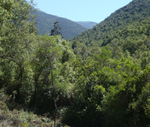
HRCEK Jan
- Institute of Entomology, Biology Centre, Czech Academy of Sciences, Ceske Budejovice, Czech Republic
- Biodiversity, Biological control, Climate change, Coexistence, Community ecology, Eco-evolutionary dynamics, Evolutionary ecology, Experimental ecology, Food webs, Host-parasite interactions, Interaction networks, Microbial ecology & microbiology, Molecular ecology, Symbiosis
- recommender
Recommendation: 1
Reviews: 0
Recommendation: 1

Parasite intensity is driven by temperature in a wild bird
The global change of species interactions
Recommended by Jan Hrcek based on reviews by 2 anonymous reviewersWhat kinds of studies are most needed to understand the effects of global change on nature? Two deficiencies stand out: lack of long-term studies [1] and lack of data on species interactions [2]. The paper by Mennerat and colleagues [3] is particularly valuable because it addresses both of these shortcomings. The first one is obvious. Our understanding of the impact of climate on biota improves with longer times series of observations. Mennerat et al. [3] analysed an impressive 18-year series from multiple sites to search for trends in parasitism rates across a range of temperatures. The second deficiency (lack of species interaction data) is perhaps not yet fully appreciated, despite studies pointing this out ten years ago [2,4]. The focus is often on species range limits and how taking species interactions into account changes species range predictions based on climate alone (climate envelope models; [5]). But range limits are not everything, as the function of a species (or community, network, etc.) ultimately depends on the strengths of species interactions and not only on the presence or absence of a given species [2,4]. Mennerat et al. [3] show that in the case of birds and their nest parasites, it is the strength of the interaction that has changed, while the species involved stayed the same. Mennerat et al. [3] found nest parasitism to increase with temperature at the nestling stage. They have also searched for trends of parasitism dynamics dependence on the host, but did not find any, probably because the nest parasites are generalists and attack other bird species within the study sites. This study thus draws attention to wider networks of interacting species, and we urgently need more data to predict how interaction networks will rewire with progressing environmental change [6,7].
References
[1] Lindenmayer, D.B., Likens, G.E., Andersen, A., Bowman, D., Bull, C.M., Burns, E., et al. (2012). Value of long-term ecological studies. Austral Ecology, 37(7), 745–57. doi: 10.1111/j.1442-9993.2011.02351.x
[2] Tylianakis, J.M., Didham, R.K., Bascompte, J. & Wardle, D.A. (2008). Global change and species interactions in terrestrial ecosystems. Ecology Letters, 11(12), 1351–63. doi: 10.1111/j.1461-0248.2008.01250.x
[3] Mennerat, A., Charmantier, A., Hurtrez-Bousses, S., Perret, P. & Lambrechts, M.M. (2019). Parasite intensity is driven by temperature in a wild bird. bioRxiv, 323311. Ver. 4 peer-reviewed and recommended by PCI Ecology. doi: 10.1101/323311
[4] Gilman, S.E., Urban, M.C., Tewksbury, J., Gilchrist, G.W. & Holt, R.D. (2010). A framework for community interactions under climate change. Trends in Ecology & Evolution, 25(6), 325–31. doi: 10.1016/j.tree.2010.03.002
[5] Louthan, A.M., Doak, D.F. & Angert, A.L. (2015). Where and when do species interactions set range limits? Trends in Ecology & Evolution, 30(12), 780–92. doi: 10.1016/j.tree.2015.09.011
[6] Bartley, T.J., McCann, K.S., Bieg, C., Cazelles, K., Granados, M., Guzzo, M.M., et al. (2019). Food web rewiring in a changing world. Nature Ecology & Evolution, 3(3), 345–54. doi: 10.1038/s41559-018-0772-3
[7] Staniczenko, P.P.A., Lewis, O.T., Jones, N.S. & Reed-Tsochas, F. (2010). Structural dynamics and robustness of food webs. Ecology Letters, 13(7), 891–9. doi: 10.1111/j.1461-0248.2010.01485.x